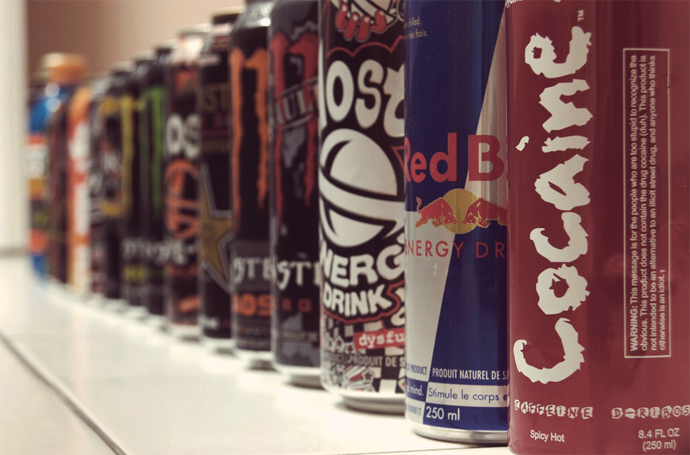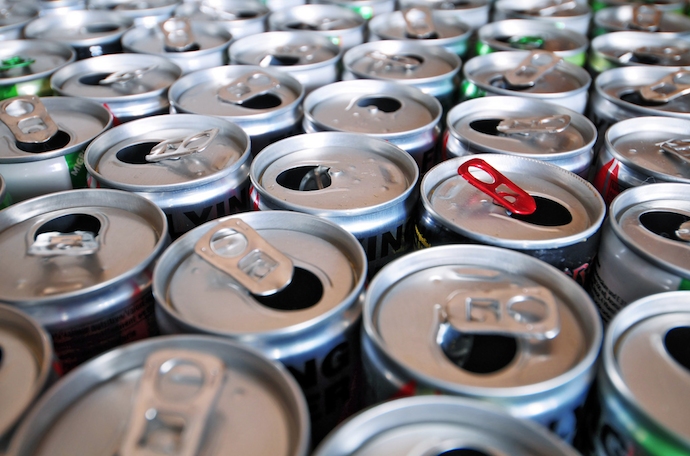The History Of Energy Drinks: A Look Back

Image via Flickr/ Simon le nippon
People have been getting their energy fixes for centuries. Pre-Columbian Americans fondly drank a dark brew of toasted holly leaves and bark. Afterward they’d go puke. The disgusting tale is totally true. Early European explorers described the practice, although they were never quite sure if the vomiting was induced by the men or caused by the drink. Either way, Indian men used the practice as a purification ritual before religious ceremonies, political councils and war.
As it turns out, the dark brew had a high caffeine content. Researchers were able to analyze traces of the beverage found in Cahokia, Ill. drinking cups dating back to at least 1250. So even Native Americans took a caffeine boost going into battle.
Over history, people have used various beverages to feel that extra burst of energy. During that time, trends have changed from tea, to coffee, on to soft drinks and back and again. But just as people throughout time have sought out drugs more powerful than caffeine, they now seek soft drinks with additional energy-boosting chemicals. Enter energy drinks. From 2008 until 2012 the energy drink market grew 60 percent, totaling $12.5 billion in US sales by 2012. But despite the market’s recent explosion, energy drinks aren’t a new concept. In fact, they’ve been around since the days of the early soda fountain.

Image via Flickr/ Tambako the Jaguar
• The first “energy” drink could actually be considered Coke since it originally contained both caffeine and another stimulant—cocaine—when launched in 1886. The soft-drink carries that history to this day – the company’s name “Coca-Cola” is derived from the ingredients: the coca plant from which cocaine is derived and the kola nut, the source of caffeine. Coca-Cola’s founder used five ounces of coca leaf per gallon of syrup, but it was reduced to a tenth of that in a later recipe. Cocaine was removed from Coke in 1903.
• Chemist William Owen first manufactured Glucozade in 1927. For years, Owen had been trying to find an energy source for cold and flu patients. The formula was offered to UK hospitals under the name Glucozade, but in 1929 the drink was renamed Lucozade.
In 1983 Lucozade rebranded itself, changing its slogan from “Lucozade aids recovery,” to “Lucozade replaces lost energy.” Maybe not a winner by today’s standards, but sales tripled in the next six years.
GlaxoSmithKline-owned Lucozade Energy contains 46 milligrams of caffeine and 37 percent of an adult’s recommended daily amount of sugar.
• Dr. Enuf was developed in 1949 when Chicago businessman William Mark Swarz was tasked with developing a soft drink full of vitamins to compete against sugared sodas loaded with nothing but empty calories. The result was an “energy booster” containing B vitamins, caffeine and cane sugar—ingredients used in many of today’s energy drinks. Swarz partnered with Tri-Cities Beverage, a Tennessee bottler that also produced Mountain Dew at the time, to produce and distribute Dr. Enuf.
Tri-Cities Beverage may have sold Mountain Dew to Pepsi, but it produces Dr. Enuf to this very day. Original, diet, herbal and diet herbal varieties can be found at grocers in northeastern Tennessee, southwestern Virginia and western North Carolina. All bottles of Dr. Enuf contain at least 80 percent of the recommended daily requirements of thiamine, niacin, potassium and iodine. Herbal varieties also contain ginseng and guarana.
• Lipovitan may look and sound like cough syrup, but it’s actually an energy drink manufactured in Japan since 1962. Marketed to boost physical and mental fatigue, the drink—sold under the names Libogen and Livita in some parts of the world—is popular in East Asia. The bright yellow drink contains primarily taurine, an ingredient in Red Bull. The brown-colored bottles also contain caffeine. Although the largest bottles of Lipovitan contain 3,000 milligrams of taurine, they contain a warning label advising not to consume more than 100 milligrams of the chemical a day.
• Another popular energy drink in Southeast Asia is sometimes called “Thai Red Bull.” Krating Daeng was first introduced in Thailand in 1976, and can now be found in Europe, Oceana and North America. The sweet, non-carbonated drink contains caffeine, taurine and B-vitamins. Interestingly, it was named after the gaur, a large, wild cattle relative that lives in Southeast Asia. Sound familiar? Is should, Krating Dong was the basis for Red Bull, but the Asian beverage definitely made its mark first with massive sales throughout Asia in the 1980s.
Energy drink history was made in 1982 when the marketing director for a German toothpaste company visited Thailand. Something that crazy had to be fate, right? When Blendex’ Dietrick Mateschitz drank some Krating Daeng and found it cured his jet lag, he had an epiphany. He must tell the world about this miracle drink! So Mateschitz worked with Krating Daeng founder Chaleo Yoovidhya to adapt the drink’s formula to Western tastes. Together, they launched Red Bull in 1987. Chaleo, born to a poor Thai-Chinese family around 1930, died a multi-billionaire.









































